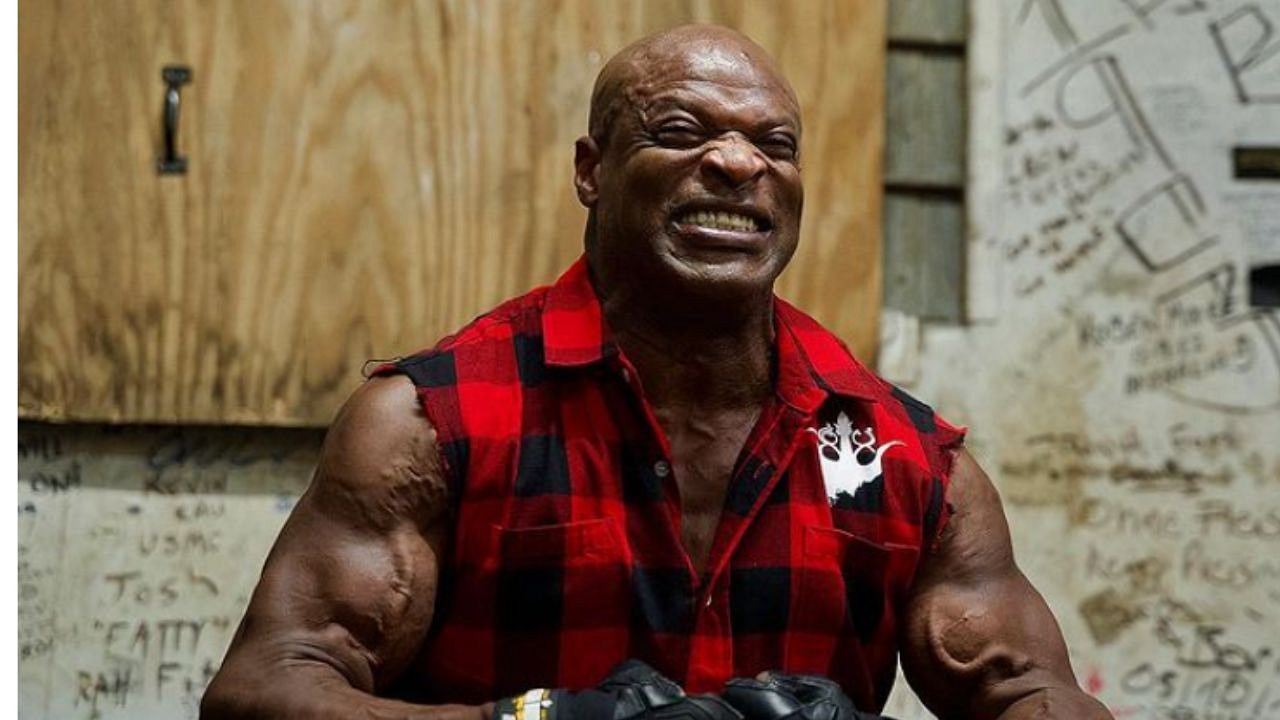In the annals of bodybuilding, the name Ronnie Coleman resonates with unparalleled dominance. Alongside Lee Haney, he stands as one of only two titans to have clinched eight consecutive Mr. Olympia titles. Celebrated as a genetic phenomenon, Coleman’s capacity to merge powerlifting with intense bodybuilding training, coupled with his remarkable recovery speed, left fellow athletes in awe. However, the relentless pursuit of physical supremacy has taken a severe toll. The question on many minds is, why can’t Ronnie Coleman walk unaided today?
 Ronnie Coleman reflecting on his bodybuilding journey
Ronnie Coleman reflecting on his bodybuilding journey
The answer lies in a history of accumulated injuries that began early in his career and intensified through years of extreme training. While his reign as Mr. Olympia showcased peak physical prowess, it also masked a growing storm of physical ailments. The initial cracks appeared as chronic back pain, which progressively worsened, ultimately necessitating a staggering 13 surgeries addressing all 25 spinal discs and beyond. Today, the bodybuilding icon relies on crutches or a wheelchair for mobility, a stark contrast to the image of “The King” dominating the stage.
Coleman’s physical challenges weren’t isolated incidents but rather a chain of events spanning his entire bodybuilding journey. His first significant setback occurred at just 17 during a powerlifting session. As recounted in his autobiography, while attempting a 500-pound squat, a sharp crack and searing pain shot through his back, marking the beginning of his long struggle with injuries.
His involvement in college football further compounded these early injuries. Later, as his professional bodybuilding career took off, another major injury struck during a 600-pound squat in 1997. This resulted in a herniated disc, an injury that would typically warrant immediate surgery. However, in a revealing conversation with Joe Rogan, Coleman described his mindset at the time and his decision to forgo surgery.
“It was a loud, gunshot sound. I’d do 600 for like 12-13 reps all the time. This time I took two weeks off… and I thought I was still as strong as before I took the time off, but I wasn’t.”
Instead of opting for surgery, Coleman chose to continue pushing his body to its limits, lifting increasingly heavier weights year after year. With each Mr. Olympia title came more intense training demands, and the prospect of surgery, with its potential to disrupt his progress, was not an option he considered viable during his competitive years. This decision, while understandable in the context of his ambitions, unfortunately set the stage for a rapid decline in his spinal health later in life.
Following his final competition in 2007, Coleman finally turned his attention to addressing his long-standing back issues and the unresolved herniated disc. This marked the commencement of a series of surgeries, many of which provided only partial or limited relief. In total, Coleman has undergone 13 operations: two on his hips, two on his neck, and an extensive nine on his back. His spinal column is now largely fused, with the exception of a single disc that subsequently herniated.
“I’ve got 14 screws, two cages…two rods…in there, too.”
Despite the daunting reality of his physical condition, Ronnie Coleman’s indomitable spirit remains a source of inspiration for fitness enthusiasts worldwide. He faces his daily challenges with a smile, and despite the setbacks from multiple surgeries, he has never relinquished hope of regaining his mobility. In recent years, the bodybuilding icon has explored various therapeutic avenues in his quest to walk unaided once more.
Ronnie Coleman’s Current Coping Strategies and Path to Recovery
In his ongoing pursuit of improved health, Coleman explored the potential of stem cell treatment a few years ago, reporting some positive changes in his condition.
However, it was his initial sessions at the MAD Recovery Centre in Abu Dhabi that instilled a renewed sense of optimism about his prospects of walking again. In a recent video update, he referred to this treatment as his pathway to taking his first steps, igniting excitement and support among his devoted fanbase who eagerly anticipate the King’s potential return to walking independently. While the journey to unaided walking remains ongoing, any progress in Coleman’s recovery would be a testament to his unwavering resilience and determination.
